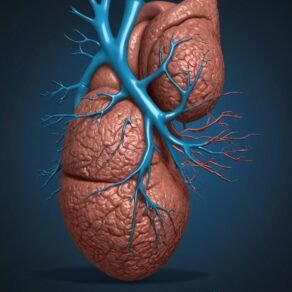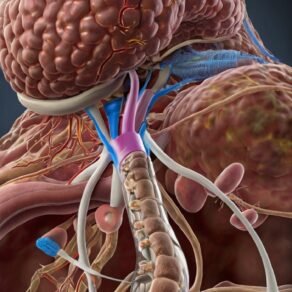Introduction:
Metabolic dysfunction-associated steatotic liver disease (MDASLD) is a multifactorial condition characterized by an abnormal accumulation of fat in the liver, often associated with metabolic disorders such as obesity, insulin resistance, and dyslipidemia. In recent years, research has unveiled the intricate relationship between estrogen’s role in MDASLD, shedding light on how this hormone influences liver metabolism and lipid accumulation.
table of contents
- Role of Estrogen
- Estrogen’s Impact on Lipid Metabolism
- Estrogen’s Anti-inflammatory Effects
- Complex Interplay of Estrogen
- Estrogen Deficiency and MDASLD Risk
- Therapeutic Implications
The Role of Estrogen in Liver Function:
- Estrogen, primarily known for its reproductive functions, also plays a crucial role in liver physiology.
- Estrogen receptors (ERs) are present in various cell types within the liver, including hepatocytes, Kupffer cells, and hepatic stellate cells.
- Estrogen signaling regulates lipid metabolism, glucose homeostasis, and inflammation in the liver.
Estrogen’s Impact on Lipid Metabolism:
- Estrogen promotes lipid oxidation and inhibits lipogenesis in the liver, thereby regulating lipid accumulation.
- Studies have shown that estrogen deficiency or ER dysfunction can lead to dysregulation of lipid metabolism, contributing to the development of fatty liver disease.
- Estrogen and Insulin Sensitivity:
- Estrogen improves insulin sensitivity by enhancing insulin signaling pathways in the liver and peripheral tissues.
- Reduced estrogen levels or impaired estrogen signaling can lead to insulin resistance, a key driver of MDASLD progression.
Estrogen’s Anti-inflammatory Effects:
- Estrogen exerts anti-inflammatory effects in the liver by suppressing the production of pro-inflammatory cytokines and promoting the activity of anti-inflammatory mediators.
- Dysregulation of estrogen signaling can exacerbate liver inflammation, further aggravating MDASLD.
Estrogen Deficiency and MDASLD Risk:
- Postmenopausal women, who experience a decline in estrogen levels, are at increased risk of developing MDASLD compared to premenopausal women.
- Experimental and clinical studies have demonstrated that estrogen replacement therapy or selective estrogen receptor modulators (SERMs) can mitigate liver steatosis and improve metabolic parameters in postmenopausal women with MDASLD.
The Complex Interplay of Estrogen and Other Factors:
- Estrogen’s effects on liver metabolism are modulated by various factors, including genetic predisposition, diet, physical activity, and gut microbiota composition.
- Understanding the interplay between estrogen and these factors is crucial for developing personalized strategies for MDASLD prevention and treatment.
Therapeutic Implications and Future Directions:
- Targeting estrogen signaling pathways holds promise as a therapeutic approach for managing MDASLD.
- Further research is needed to elucidate the mechanisms underlying estrogen’s effects on liver metabolism and inflammation, as well as to identify novel therapeutic targets for MDASLD.
Conclusion:
Estrogen plays a multifaceted role in regulating liver metabolism and inflammation, with implications for the development and progression of metabolic dysfunction-associated steatotic liver disease. Maintaining optimal estrogen levels and function is essential for preserving liver health and preventing MDASLD in both men and women. Future research efforts aimed at unraveling the complexities of estrogen signaling in the liver hold promise for advancing our understanding and treatment of this prevalent metabolic disorder.





